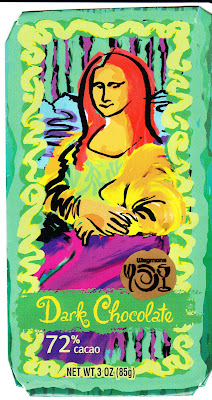 |
A current French edition of Loti's book.
I read an old translation into English
in a Kindle Edition. |
Riding a horse through the deserts and wild places of Morocco, French author Pierre Loti (1850-1923) was accompanied by a large number of men to serve and protect him. Loti, an emissary from the French government to the Sultan of Morocco, described the trip in vivid detail in his book
In Morocco, published in 1890.
Camels carried the baggage on the twelve-day trip from his entry point across from Spain to Fez, and on a later trip continuing through the country. As they stopped each evening, their food came from local villages, courtesy of a custom called the
mouna. He explained:
“The appearance of the mouna is always the most important event of the close of a day's march. It comes usually in the twilight, in long procession, to be deposited finally on the ground before the tent of our Minister. I ask pardon for this Arab word, but our language does not possess its equivalent : mouna is the tithe, the ransom, which our quality of embassy gives us the right to levy upon the tribes through whose territories we pass. Without this mouna, commanded long in advance and brought sometimes from a great distance, we should risk dying of hunger in this country without inns, without markets, with scarce a village, almost a desert.” (Pierre Loti, In Morocco, Kindle Locations 326-331).
 |
Illustration from the English edition of In Morocco. Obviously Loti's attitudes
do not necessarily follow current norms for describing other ethnic groups,
but there's quite a lot of fascinating material in the book. |
Loti described several of these evening meals. Sometimes the tribal villagers would bring cooked food in large containers, almost always including couscous. Often they brought live sheep, chickens, and other animals to be slaughtered and cooked by the members of Loti's entourage. He also described in interesting terms the way that his attendants would put up the tents for camp each night, and quickly take them down in the morning.
Here are some of the descriptions of the meals that were brought by the tribal villagers:
"The first ten men carry large earthen amphorae full of butter; then come jars of milk, baskets of eggs, round wicker cages filled with fowls tied by the legs; four mules laden with loaves of bread, lemons, oranges ; and, finally, twelve sheep, led by the horns—which enter reluctantly, poor beasts, into this foreign camp, as if already their fears misgave them." (Kindle Locations 334-337).
"Under these esparto roofings are large earthenware tubs, filled with viands heaped up in pyramids; a sweet couscous; a savoury couscous, crowned with an edifice of chickens; a roasted sheep ; and a pile of those highly spiced tarts known in Morocco as 'gazelles' hoofs.'" (Kindle Locations 627-629).
"After we have supped, a new procession appears in the moonlight, bringing this time sixteen sheep, a respectable number of fowls, of loaves and jars of butter." (Kindle Locations 496-497).
"It is our mouna coming to us, slow and grave as ever: a milk couscous, a sugar couscous; a live sheep and a number of chickens in cages. Willingly would we send back the poor beasts, were such a course permissible to us; but they must needs be delivered up to the knife and the voracity of the men of our escort." (Kindle Locations 2888-2890).
In a town called Czar-el-Kebir, Loti was entertained by two local dignitaries. Inside their houses he found "interior courts, colonnaded, and paved and panelled with mosaics." The refreshments began with a type of pastry that had already been mentioned, "gazelle's hoofs," which are a type of sweet, horn-shaped sweet, still made and in current English called "gazelle's horns" --
"... we are offered 'gazelles' hoofs,' in large dishes, and tea in microscopic cups, as in China—tea which is brewed on the ground in silver samovars, and is very sweet, and strongly flavoured with mint, anise and cinnamon. Coffee is scarcely ever taken in Morocco—tea always and everywhere. And it comes from England, as do also the samovars in which it is made and the gilded cups from which it is drunk." (Kindle Locations 688-691).
Food descriptions throughout
In Morocco are fascinating, especially when they show the character of the people Loti encountered; for example:
"The luncheon, too, with this old chief, is savage, like his territory, like his tribe. On the ground, on the carpet of yellow flowers, at a chance spot in the midst of the boundless plain, he offers us a black couscous, with sheep roasted whole, served on large wooden platters. And while we are tearing, with our fingers, fragments of flesh from these huge joints, come suppliants again to sacrifice before our Minister a ram, which ensanguines the grass around us." (Kindle Locations 1006-1010).
When Loti reached Fez, he was given native clothing and assigned to live in a seemingly modest house with terraces on the roof from which he sees the women of the town. He looks although he knows it's not really allowed. The neighbor who lives in another part of the house is a rich man, and he hears and sometimes sees his neighbor’s family:
“The noise I hear so regularly every morning and every evening—it aroused my curiosity not a little— I find is the pounding of sugar and cinnamon bark to make sweets for his children, who are very numerous.” (Kindle Locations 1955-1956).
In his official capacity, Loti is invited to various court functions in Fez; he writes:
“The state dinners will not commence till next week ; so far there are only luncheons, but luncheons worthy of Pantagruel, such as were those of our ancestors in the Middle Ages. On tables, or on the ground, are set large tubs of European or Japanese porcelain, heaped with fruits, shelled nuts, almonds, ‘gazelles' hoofs,’ preserves, dates, saffroned sweetmeats.” (Kindle Locations 1762-1764).
In Morocco describes Loti's impressions in great detail. The colors of the landscape with its carpets of spring flowers, the distant mountains, the many people he met were fascinating to read about. I especially appreciated his descriptions of aromas and odors, and I'll leave you with this description of a smell: Camels, wrote Loti, “have an indefinable odour, sweet and musty, midway between a stench and a perfume; and they leave a trail of it behind them, even long after they have passed.” (Kindle Locations 2763-2764).
NOTE: I downloaded this book in Kindle format from the Internet Archive. Link:
https://archive.org/details/moroccom00lotirich





















































